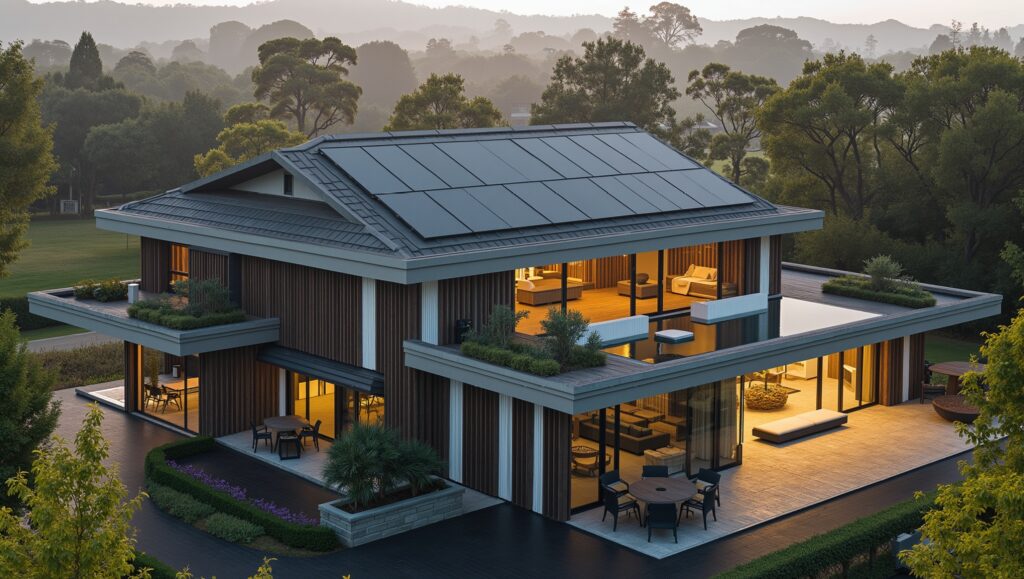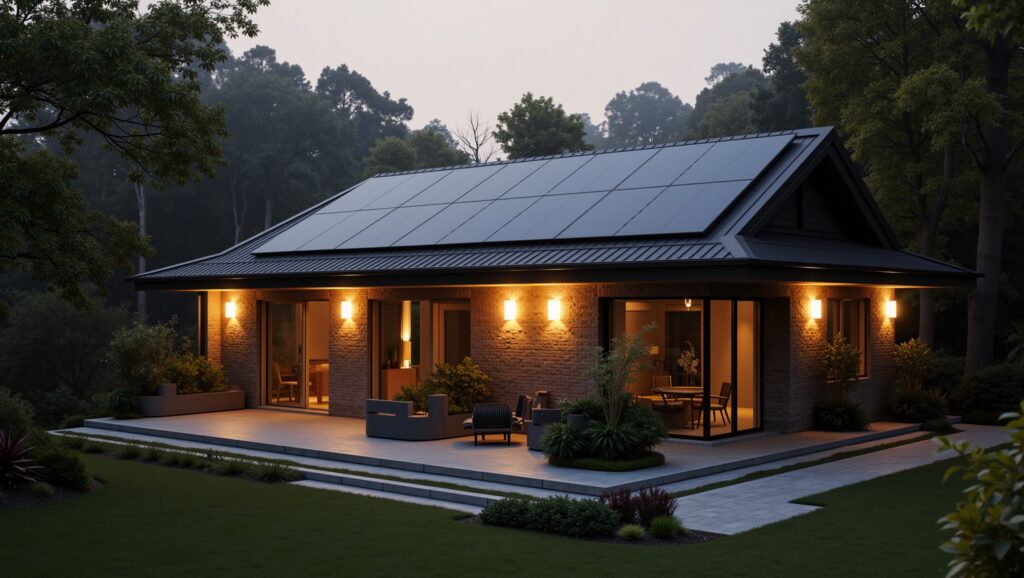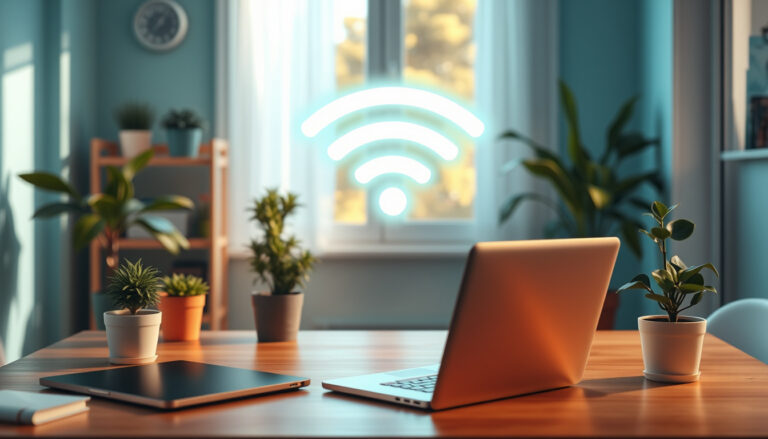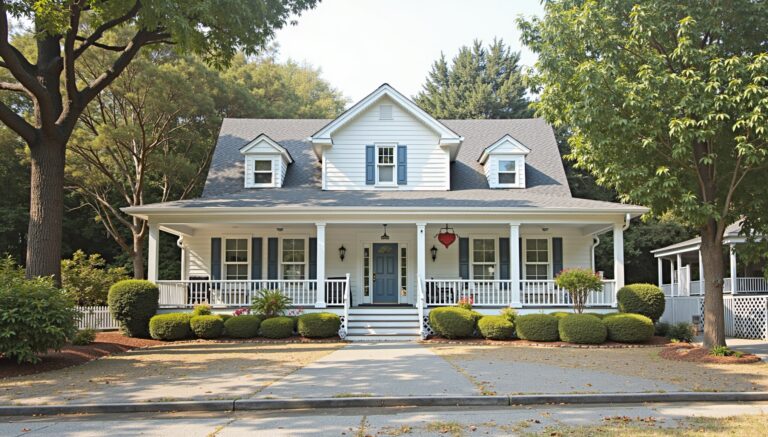As the world increasingly shifts towards sustainable solutions, solar powered houses have emerged as a compelling option for environmentally conscious homeowners.
These innovative homes harness the sun’s energy to provide electricity, reduce carbon footprints, and promote sustainable living practices.
In this article, we will explore the fundamentals of solar powered houses, their myriad benefits, how they operate, design considerations, and the challenges you might face on your journey to owning one.
Join us as we delve into the promising future of solar powered housing and discover how you can transform your living space with renewable energy.

Key Takeaways
- Solar powered houses significantly reduce energy bills and carbon footprints.
- These homes harness solar energy through panels, converting sunlight into usable electricity.
- Designing a solar powered home requires careful planning for optimal energy efficiency.
- Challenges include initial costs and integration with existing infrastructure.
- The future of housing trends towards sustainability, making solar powered solutions increasingly viable.
Introduction to Solar Powered Houses
As the demand for sustainable living solutions grows, solar powered houses have emerged as a leading option for environmentally-conscious homeowners.
These innovative homes harness solar energy through photovoltaic panels, converting sunlight into electricity to power everyday appliances and systems.
By integrating energy-efficient designs, solar powered houses not only reduce reliance on fossil fuels but also significantly lower utility bills.
Furthermore, with advancements in technology and increased government incentives, investing in solar powered houses has never been more appealing.
Whether you’re interested in building a new home or retrofitting an existing one, understanding the benefits and potential of solar powered houses is essential for making an informed decision toward a greener future.
The Benefits of Solar Powered Living
In recent years, solar powered houses have gained immense popularity as homeowners increasingly seek sustainable and cost-effective living options.
One of the primary benefits of solar powered living is the significant reduction in energy bills; by harnessing the sun’s energy, homeowners can dramatically lower their reliance on traditional electricity sources, leading to substantial savings over time.
Additionally, solar powered houses contribute to environmental conservation by decreasing carbon footprints and promoting clean energy usage.
These homes often come equipped with advanced energy storage systems, allowing residents to utilize solar energy even during peak demand hours or cloudy days, ensuring consistent power supply.
Furthermore, many governments offer incentives and tax breaks for solar energy investments, making the transition to solar not only environmentally beneficial but economically advantageous as well.
With the growing emphasis on sustainability, solar powered houses represent a forward-thinking choice for those looking to invest in their future while protecting the planet.
‘The use of solar energy is no longer a dream; it is a tangible reality that empowers us to create a sustainable future.’ – Anonymous

How Solar Powered Houses Work
Solar powered houses harness renewable energy from the sun to convert into electricity, providing a sustainable and eco-friendly way of powering homes.
These systems primarily utilize solar panels, which consist of photovoltaic cells that absorb sunlight and convert it into direct current (DC) electricity.
This electricity is then inverted to alternating current (AC) to be used in household appliances.
To optimize efficiency, solar powered houses often feature battery storage systems that store excess energy generated during sunny days, allowing homeowners to draw on this energy during cloudy days or at night.
Furthermore, many solar powered houses are designed with energy-efficient appliances and superior insulation, minimizing consumption and maximizing energy savings.
As the demand for sustainable living grows, investing in solar powered houses is becoming increasingly popular, contributing to decreased electricity costs and a reduced carbon footprint.
Designing Your Solar Powered Home
Designing solar powered houses is an exciting endeavor that merges sustainability with modern living.
When planning your solar powered home, it’s essential to consider both the architectural style and the functionality of solar panels.
Start by selecting a location that maximizes sunlight exposure; ideally, your roof should face south to capture the most energy.
Integrate large windows and open spaces to enhance natural light, which can reduce the reliance on artificial lighting.
Additionally, use energy-efficient appliances and insulation to complement your solar energy system, ensuring that your home maintains a comfortable temperature year-round.
By including features like passive solar heating and rainwater harvesting, you can further optimize the eco-friendliness of your solar powered house, making it not only a smart investment but also a place that harmonizes with the environment.

Challenges and Considerations
In recent years, the demand for solar powered houses has surged, particularly as more buyers seek eco-friendly living solutions and reduce their carbon footprints.
However, there are significant challenges and considerations to be aware of before fully committing to the conversion of a property to solar energy.
First and foremost, the initial investment can be substantial; the cost of solar panels, installation, and necessary permits may deter some potential homeowners.
Furthermore, location plays a vital role in the effectiveness of solar power—regions with more sunlight year-round will naturally yield better results, making some areas more viable for solar powered houses than others.
Additionally, potential homeowners should consider the longevity and maintenance of solar systems, ensuring that they are prepared for periodic upkeep and potential technology upgrades.
Lastly, understanding local regulations and incentives can make a substantial difference in the financial feasibility of investing in solar energy.
By weighing these factors, buyers can make informed decisions about adopting solar powered houses as a sustainable choice for their future.
The Future of Solar Powered Housing
As the world becomes increasingly aware of environmental sustainability, the future of solar powered houses looks exceptionally promising.
These innovative homes not only harness the sun’s energy to reduce utility costs, but they also contribute significantly to a greener planet.
With advancements in solar technology, including more efficient panels and storage solutions, homeowners can now enjoy a consistent and reliable energy source.
Furthermore, the integration of smart home technology allows for the optimization of energy use, making solar powered houses more appealing than ever.
As governments and municipalities offer incentives for renewable energy installations, investing in solar powered housing becomes a financially savvy decision, ensuring that homeowners enjoy long-term savings while positively impacting the environment.
In summary, the trajectory for solar powered houses is bright, making them a leading choice for future residential developments.
Frequently Asked Questions
What are solar powered houses?
Solar powered houses are homes that utilize solar panels to convert sunlight into electricity, providing a renewable source of energy for various household needs.
What are the benefits of living in a solar powered house?
The benefits include reduced electricity costs, lower carbon footprint, increased energy independence, and potential government incentives for homeowners.
How do solar powered houses work?
Solar powered houses use photovoltaic panels to capture sunlight, converting it into usable electricity, which can power all of the home’s electrical appliances and systems.
What should I consider when designing a solar powered home?
Consider factors such as location, roof orientation, solar panel type, energy efficiency of appliances, and potential shading from trees or buildings.
What are the future prospects for solar powered housing?
The future looks promising with advancements in solar technology, increasing affordability, and a growing emphasis on sustainable living and renewable energy sources.





